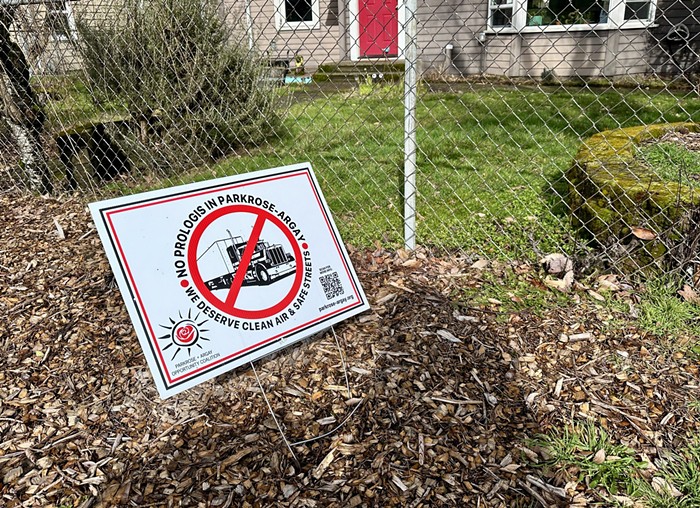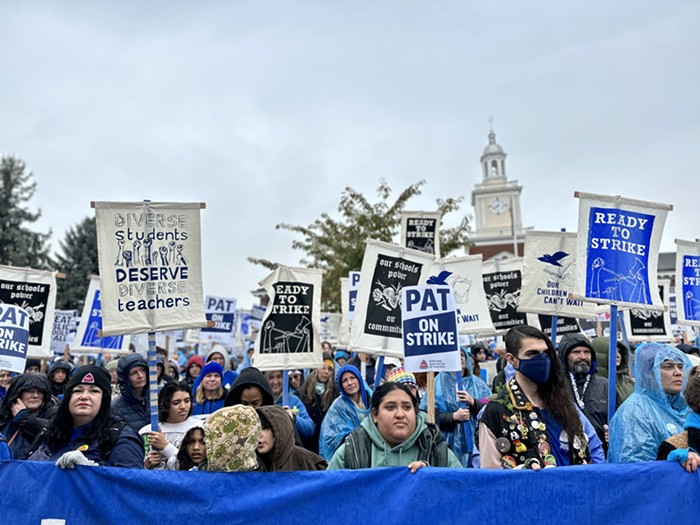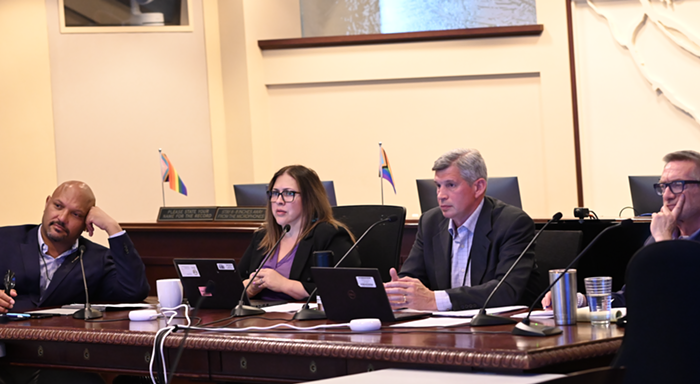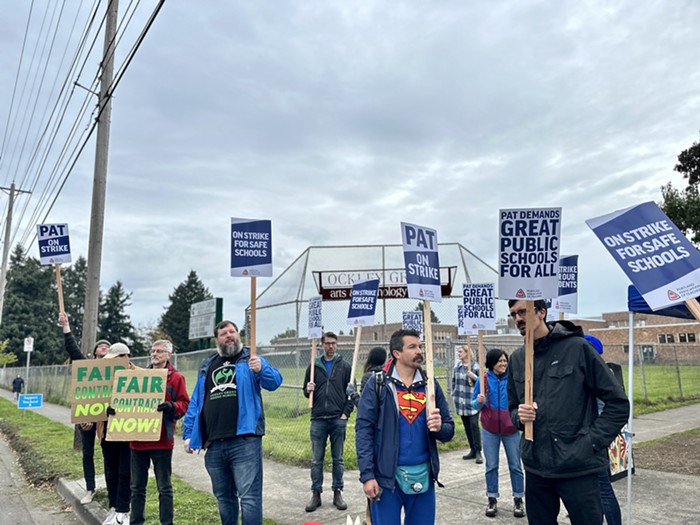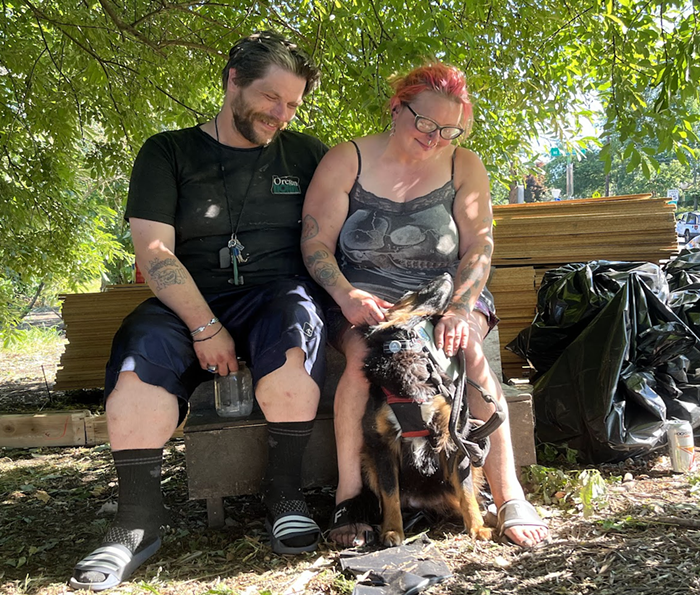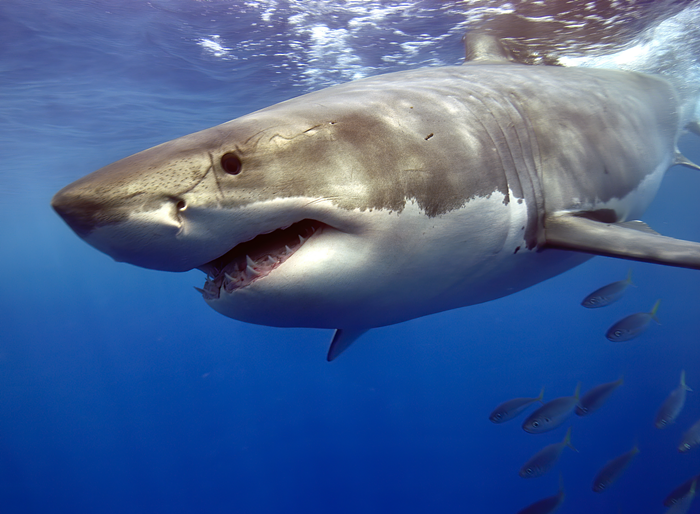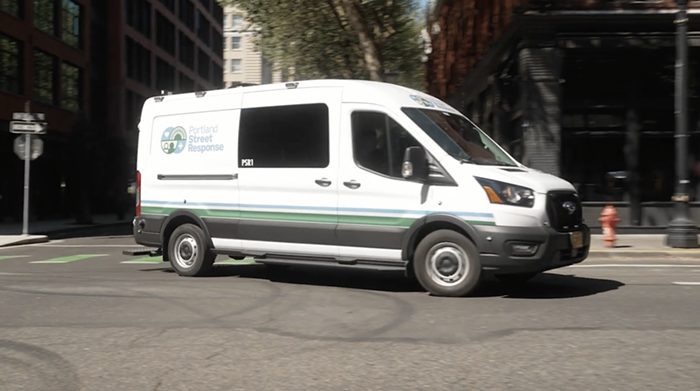In the 1950s, terror "drills" involved students climbing under their school desks, clinging to the security of cheap metal and varnished particle board to keep them safe from a nuclear attack. But times have changed—now, terror drills require years of planning and participation by cities, states, the federal government, non-governmental organizations, and hospitals. But are those drills, like this week's massive TOPOFF 4 exercise, any more realistic than "duck and cover"?
On the morning of Tuesday, October 16, a bomb exploded on board a MAX train crossing the Steel Bridge, destroying the MAX and a line of cars going the opposite direction, and spewing debris and bodies around the bridge and into the Willamette River.
The bomb turned out to be of the "dirty" variety—packed with radioactive material—immediately contaminating everything in the area, including the survivors. Once first responders—the fire department—arrived, they had to deal not only with the catastrophic damage, but also with a deadly environment, which slowed their rescue efforts. Area hospitals set up decontamination tents and triage centers, which, within hours, crowded with victims, many of whom died upon arrival from trauma or radioactive poisoning. Local shelters were also crowded, housing those displaced by the radioactive cloud over downtown.
That's the scenario, anyway, carefully crafted by the Department of Homeland Security over the past couple of years. But here's what really happened: A week ago, the organizers of the TOPOFF event (which was also taking place in Phoenix and Guam, but to a much more limited extent) carted a bus to a field in Yakima, exploded a bomb in it, and marked the location of debris. They then packed it all down to Portland for the exercise—the bus was a stand-in for a MAX train, and an open field at Portland International Raceway (PIR) stood in for the Steel Bridge.
The PIR field was charmingly marked up to look like the bridge, albeit a sort of junkyard-chic version of it. To make it more realistic, a large panoramic picture of the Rose Quarter was placed off in the distance, attached to a chain link fence.
At about 9:06 am that Tuesday morning, as reporters, "actors," agency officials, and emergency responders looked on from a safe distance, a flash bomb was detonated on the bus to simulate the explosion. There was no technical need for the explosion, and there was near unanimous agreement among the spectators that it was clearly done for the sole benefit of TV news cameras.
The disconnect between terror fantasy and practical reality became quickly apparent, as fire trucks, ambulances, and responders traipsed around the field, apparently oblivious to the fact that if it were really the Steel Bridge, they'd be swimming in Willamette-brand muck.
There was also a shocking lack of urgency—a full 14 minutes passed between the explosion and the appearance of fire trucks. Once the scene was assessed, "victims" were triaged and loaded onto—no, not ambulances—TriMet buses. It wasn't until three hours later that the first of them began arriving at OHSU, staggering in pretend pain, coated in horror movie make-up, fake blood, and stomach-churning fake sores. Only five patients showed up in the first round, but OHSU staff expected that more victims would come "trickling in" (indeed, a fake press release sent out by the hospital that afternoon said they received 42 patients and that 26 of them would be admitted). The "real world" rain was apparently delaying the transportation of more victims—considering Portland's climate, it might be discomforting to know that rain, of all things, can cripple emergency response.
Undeniably, the agencies and workers participating in TOPOFF 4 found the exercise to be important, and the federal government is, of course, interested in gauging and improving responses to major disasters in the wake of the Katrina debacle. And here's what the TOPOFF exercise in Portland has apparently taught them: In certain situations, firemen can walk on water and defy gravity, TV news producers love things that are loud and go boom, PIR is a long haul from OHSU, and, in the event of a major disaster, rain just might kill you.
Three and a half hours after the bus "explosion" kicked off TOPOFF 4, Darryl Madden, a spokesperson for the Federal Emergency Management Agency, said the drill was "going well, though we're just looking at one small piece of it." It'll be months before the entire exercise can be analyzed, he added, as fake victims shuffled past him. Then, since he had time before the afternoon's press conference, he went to get a sandwich.
